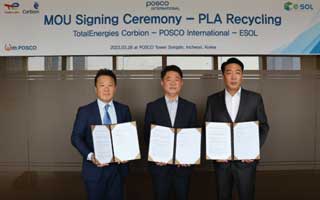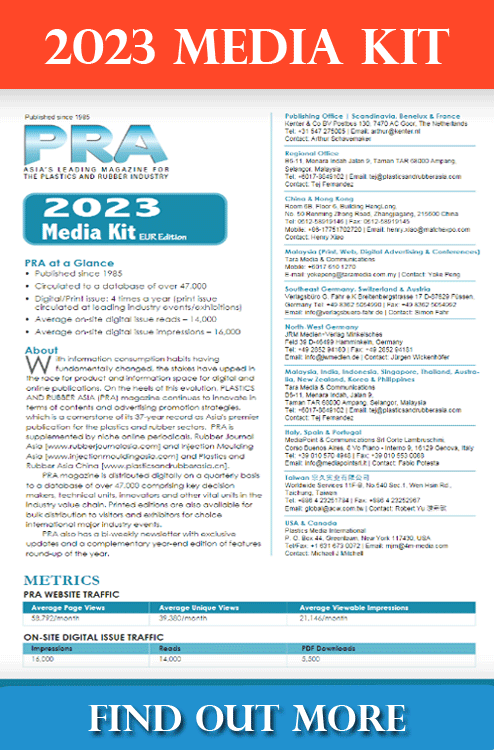Packaging: Improving global carbon emissions, one package at a time
Designing consumer product packaging to reduce carbon footprint is a win-win for global sustainability causes, adds Angelica Buan in this report.
In 2022, global CO2 emissions from energy increased by 0.9% or 321 tonnes, setting a new record of more than 36.8 gigatonnes. According to the International Energy Agency (IEA)’s CO2 Emissions in 2022 report, emissions from energy combustion increased by 423 metric tonnes (Mt) while emissions from industrial processes decreased by 102 tonnes.

Meanwhile, the Climate Collaborative (comprising a community of businesses joining forces to tackle climate change) says that packaging contributes significantly to greenhouse gas emissions (GHG) because it typically consumes 5% of the energy used during a food product's life cycle. Furthermore, some goods' packaging has a greater impact on climate change than the fuel used to transport them to market.
Tackling rising carbon emissions with circular packaging solutions
With these figures obviously on the uptrend, rising carbon emissions is seemingly becoming out of control. And that seems to be the case, because authoritative institutions like the United Nations Environmental Programme (UNEP) are issuing dire warnings after new findings that emissions are not going down significantly.
As noted in UNEP's Emissions Gap Report 2022, only an immediate system-wide transformation will result in the significant reductions in GHGs required to meet a 1.5°C target by 2030, or by 45% compared to current policy projections.
Current policies predict a 2.8°C temperature rise by the end of the century, well short of the Paris Agreement target of keeping global warming well below 2°C.
As a result, adopting the circular economy model is expected to accelerate progress toward these goals.
The Carbon Collaborative defines circular economies as systems that "eliminate waste and pollution, keep products and materials in use, and regenerate natural systems."
A company's bottom line can benefit from adopting a circular ethos, and brand reputation and leadership can be strengthened as a result, it adds. To accomplish this, circular product packaging has to be designed, and resources invested in materials and methods to close resource loops.
Meanwhile, by utilising advancements in design and end-of-life systems, the World Economic Forum has estimated that 50% of the world's plastic packaging can generate income even after its initial use, amounting to as much as US$3 billion annually across all OECD countries, including the US.
Thus, awareness to circular packaging has reached fever pitch and currently, industry leaders, brands and manufacturers are collaborating in efforts to improve the carbon footprint of packaging.
True sustainable packaging with rPLA
Consumers consider the packaging's ability to be recycled and biodegraded as well as its sustainability. The amount of recycled content in a packaging also matters today, so companies are increasing the amount of recycled content materials in their products.

Consultant McKinsey's True Packaging Sustainability report provides these insights on sustainability, which it claims can be divided into three main components, namely, removing packaging leakage into the environment, increasing recyclability and utilising recycled content in packaging, as well as minimising packaging's carbon footprint.
Building on growing carbon neutrality initiatives worldwide, TotalEnergies Corbion, Posco International, and Esol formed a partnership to advance polylactic acid (PLA) recycling infrastructure and technology in South Korea, which is pushing its five-year National Strategy for Green Growth strategy to decarbonise and achieve net-zero emissions by 2050.
Posco, South Korea’s largest trading company, intends to expand its green portfolio by entering the biobased plastic recycling sector. While Posco will manage and finance the project, Esol, also from South Korea that already produces PLAbased products in the country, is in charge of retrieving the post-consumer recyclate (PCR) PLA waste and advancing the technology to collect and sort, purify, clean, and rework the PLA.
The partnership will enable TotalEnergies Corbion, which is already supplying its Luminy brand of rPLA to the South Korean market, to leverage its existing advanced recycling technology and infrastructure to establish a recycling infrastructure throughout its supply chain for a more sustainable use of plastics in the country’s growing PLA market.
PLA, a low-carbon-footprint alternative to traditional plastics, is quickly becoming a popular material for bottles, containers, and other food service and packaging products. Luminy's mechanical and advanced recycling is increasing PLA demand in the food packaging sector, adds TotalEnergies Corbion.
(PRA)
Subscribe to Get the Latest Updates from PRA Please click here
©2023 Plastics and Rubber Asia. All rights reserved.

©2023 Plastics and Rubber Asia. All rights reserved.
Home Terms & Conditions Privacy Policy Webmail Site Map About Us















